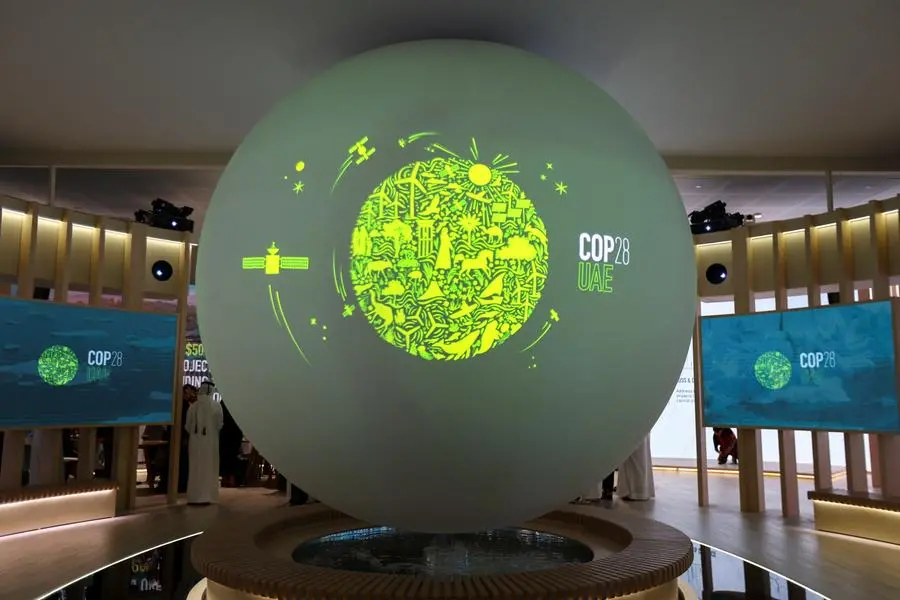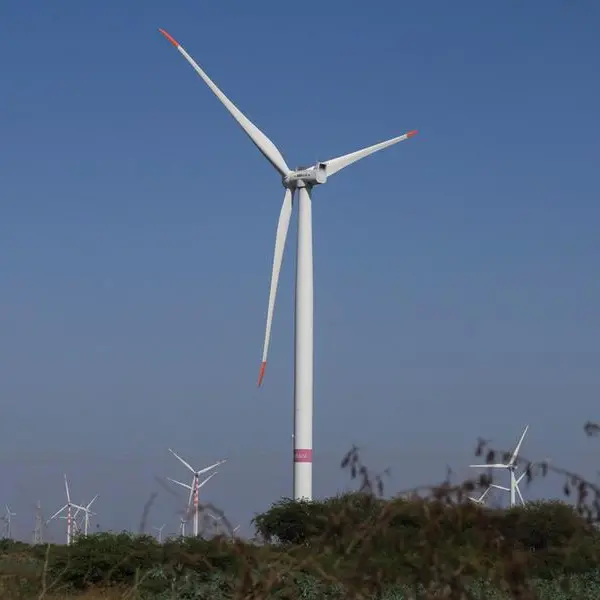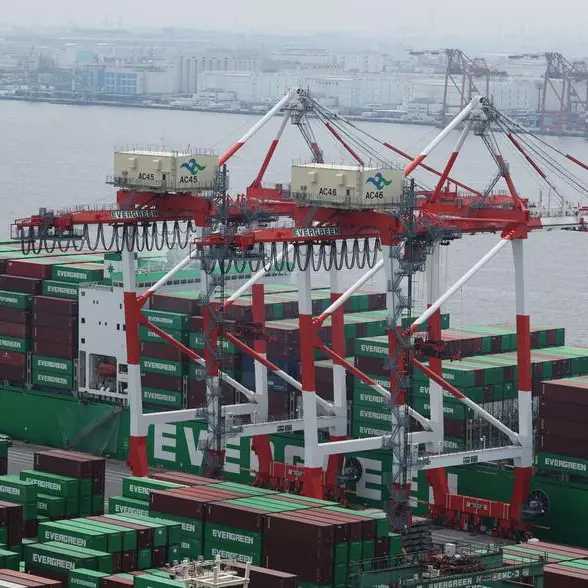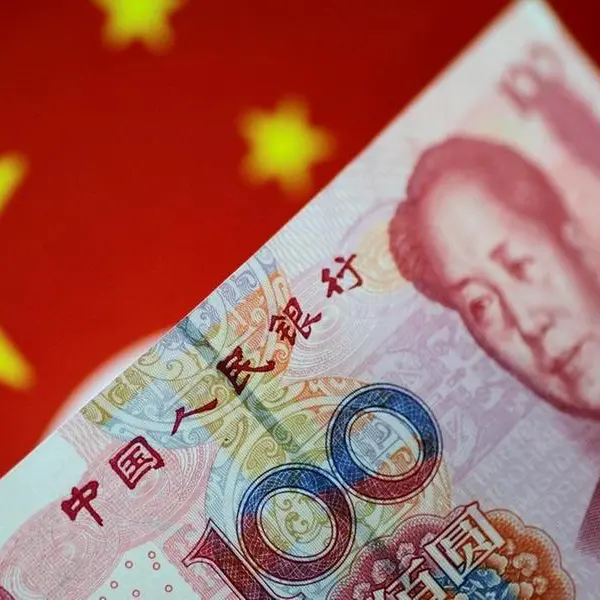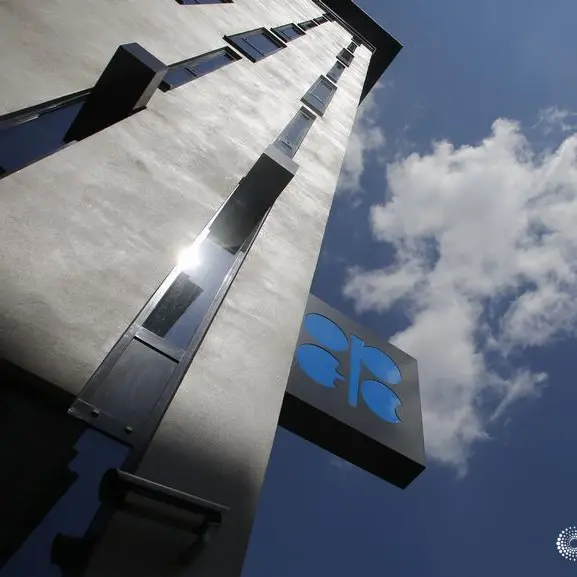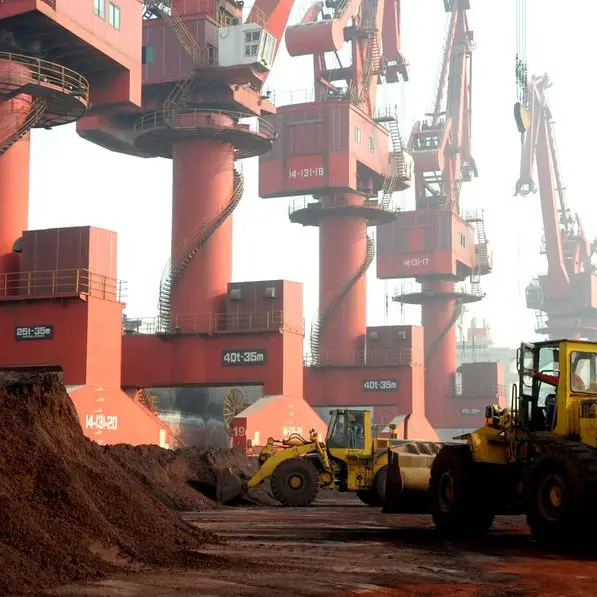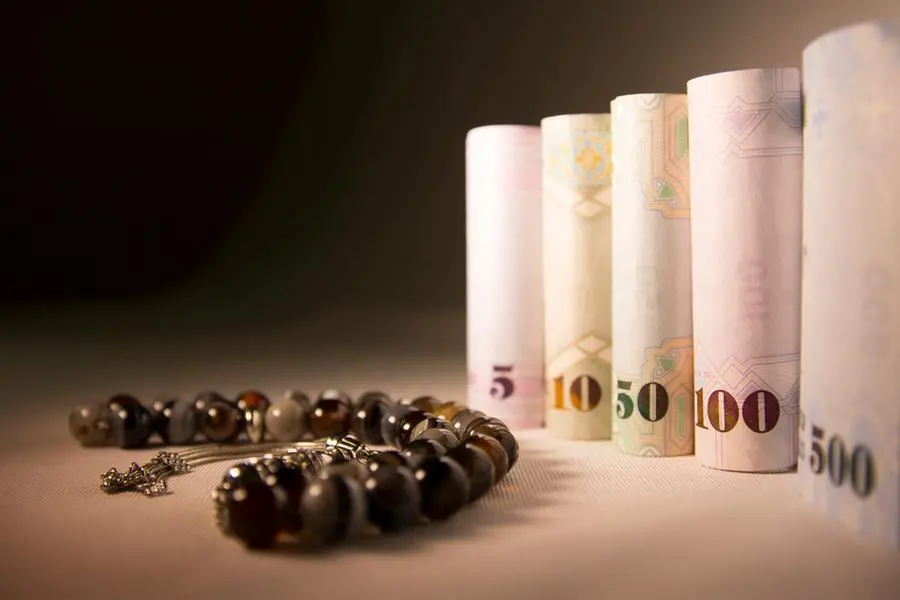PHOTO
A view shows the 'Cop28 UAE' logo on a globe, during Abu Dhabi Sustainability Week (ADSW), in Abu Dhabi, UAE, January 17, 2023. REUTERS/Rula Rouhana
(The opinions expressed here are those of the author, a columnist for Reuters.)
LITTLETON, Colorado - Africa may be set to transform itself from a relative clean-energy laggard into a power-sector pioneer.
African power firms have plans to dramatically expand the continent's energy generation base and make it far cleaner. This could help fuel Africa's expected economic acceleration over the coming decades and provide jobs for its population of roughly 1.5 billion.
But the key will be execution.
The continent's power companies are seeking to sharply boost clean-power generation, cut reliance on fossil fuels and nearly double total power output by the time projects near or under construction are completed.
The projected 278% jump in Africa's clean power capacity - between now and the completion of all the planned projects - dwarfs the 109% rise slated for projects at similar phases globally, according to Global Energy Monitor (GEM). But realizing these plans will require overcoming major obstacles, including a lack of energy policy coordination among nations, outdated existing energy infrastructure and limited experience operating regional power pools.
CLEAN LEADERS
All told, there are around 32,700 megawatts (MW) of clean- power capacity under construction across Africa, and around 60,000 MW of clean-power capacity already in operation.
African power firms are, in aggregate, currently building 250 megawatts (MW) of geothermal plants, nearly 5,000 MW of wind projects, 8,100 MW of solar parks, 15,600 MW of hydro dams, 3,600 MW of nuclear capacity, and around 120 MW of bioenergy capacity.
A further 134,000 MW of clean capacity is in the so-called pre-construction phase, which refers to permitted projects that have yet to break ground.
The locations of the current and planned projects vary widely, but on the whole Northern Africa has a larger volume of planned solar and wind projects than Sub-Saharan Africa.
Several nations stand out in terms of scale.
Egypt is currently constructing 2,400 MW of hydro, 1,400 MW of solar, 2,500 MW of wind, and 1,200 MW of nuclear.
Kenya and Ethiopia are both exploiting their relatively easy access to geothermal sources and are constructing the lion's share of geothermal capacity.
And around 15,000 MW of hydro is being planned across Ethiopia, Egypt, Angola, Nigeria and Tanzania, while Nigeria also has a 4,800 MW nuclear plant in pre-construction.
Meanwhile, around 22,000 MW of fossil fuel-fired power capacity is currently under construction across the continent, with an additional 25,000 MW in pre-construction. This will be on top of Africa's existing fossil fuel-powered operating capacity of around 177,000 MW, or roughly 74% of its total current power-generating capacity.
CHALLENGES
Africa's current power development road map bodes well for clean-power supporters, with 50% more clean capacity than fossil-fuel capacity currently being built and five times more clean capacity than fossil capacity in the pre-construction phase.
However, bringing all of these plans to fruition will require sustained financial, governmental and societal support for clean-power development as well as a veritable army of effective project managers.
Power firms may struggle to secure sufficient qualified labour for certain projects. They may face difficulties sourcing certain in-demand parts and materials that remain subject to supply-chain snarls and manufacturing backlogs.
Power providers must then also ensure that the energy generated from their new assets is channelled to consumers who are prepared to pay up for that power.
This will require extensive cross-border transmission networks, which mostly do not yet exist.
But construction of transmission lines is already under way across several rapidly developing countries, including Tanzania, Togo, Kenya and elsewhere. A 1,700 kilometre line spanning Senegal, the Gambia, Guinea and Guinea-Bissau was completed last year, while a 500-km Kenya-Tanzania Interconnector is due to come on line later this year.
This is a good start, but many more long-distance lines will be needed if African nations are to get full value out of the clean-power capacity being built and if power producers are to secure paying customers to help cover their construction costs.
RIGHT PLACE, RIGHT TIME
While meeting these challenges will not be easy, African power firms may be well-positioned to do so.
First, global energy firms are seeking to expand market share just as several African nations are committing to major energy-system upgrades.
African firms may also be able to bypass some of the traditional energy development avenues by adopting new technologies that can be deployed in areas without existing grids and be tailored to meet the continent's evolving needs.
For example, firms today can utilise real-time power management systems to ensure maximum volumes of clean energy are dispatched around the clock and that fossil fuel plants supplement these sources only when clean-generation volumes fall short of system needs.
The continent's power suppliers should also have access to improved battery systems that can store surplus clean power during high output periods and then discharge it onto grids during peak demand intervals to optimize grids and ensure power flows remain as clean as possible.
This moment represents a tremendous opportunity for the continent. A well-managed and coordinated build-out of the planned power supply pipeline could help provide the abundant and cheap energy that is urgently needed to spur industrial growth and enable the region to fulfil its economic and demographic potential. The opinions expressed here are those of the author, a columnist for Reuters.
(Reporting by Gavin Maguire; Editing by Anna Szymanski and Matthew Lewis)
